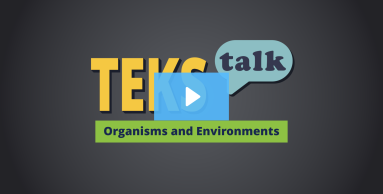
Knowledge and Skills Statement
Provide students with a list of organisms that undergo complete metamorphosis and have them choose one organism to study. Examples of organisms that undergo complete metamorphosis other than butterflies and frogs include beetles, moths, bees, ants, and fleas. Each student should research the life cycle of their organism and create a poster or slide deck which shows each of the stages of metamorphosis. They should then share their posters with another student and describe how the organism moves from one stage to the next. For example, a student who is studying a frog life cycle might explain that the adult frog lays eggs which then hatch into tadpoles. As they grow older, the tadpoles develop legs. The tadpoles then develop into froglets, which grow into adult frogs.
The further explanation is designed to be a resource for educators that helps them better understand the topic their students are learning. Further explanations may be written at a more complex level than would be expected for students at the grade level.
In grade 1, students studied incomplete metamorphosis. In grade 2, students are introduced to insect life cycles that go through complete metamorphosis, where young do not resemble their parents until adulthood. Complete metamorphosis consists of four distinct stages in which the insect continues to grow and change during each stage: egg, larva, pupa, and adult. For example, ladybird beetles, darkwing beetles, and monarch butterflies undergo complete metamorphosis.
Research
Keeley, Page. “Formative Assessment Probes: Does It Have a Life Cycle?” Science and Children, vol. 48, no. 3, 2010, pp. 26–28. JSTOR, http://www.jstor.org/stable/43175756. Accessed 30 Nov. 2022.
Summary: Learning about life cycles can help students understand the continuity of life, but students need to know that life cycles look different depending on the organism. Many young students start learning about life cycles by observing and describing the parts of the life cycles of organisms that experience a complete metamorphosis, like butterflies. Learning life cycles through complete metamorphosis only can cause students misconceptions about life cycles. They can start to believe that only organisms that experience dramatic phase changes (like frogs or butterflies) experience life cycles rather than all living things. Collaborative discussion among students is essential in correcting these misconceptions. Teachers can discuss organisms using picture cards for younger grades, and students can decide together whether or not they think that organism experiences a life cycle and give their reasoning for why or why not. Students can then describe the different phases these organisms go through during their life cycle.
Research
Dobey, Daniel C., and Heidi S. Springer. “Simply Butterflies.” Science and Children, vol. 40, no. 3, 2002, pp. 16–21. JSTOR, http://www.jstor.org/stable/43173369. Accessed 30 Nov. 2022.
Summary: The students in this article participated in a lesson completed in an elementary classroom that allowed them to observe the phases in the life cycle of a butterfly. Teachers created a large observatory so students could be fully immersed in watching the adult butterflies. The observatory itself generated excitement and many questions and predictions. Teachers should start by activating students' prior knowledge about butterflies at the beginning of the unit. Most students have previous information about butterflies but no specific knowledge about their life cycle or the phases they go through. Each student had a caterpillar of their own to observe over the weeks. Students made daily observations and recorded them while answering questions about any changes they noticed at each stage. Once the chrysalises transformed into butterflies, students had the opportunity to help feed them and make final observations. This article also provides additional internet resources.
